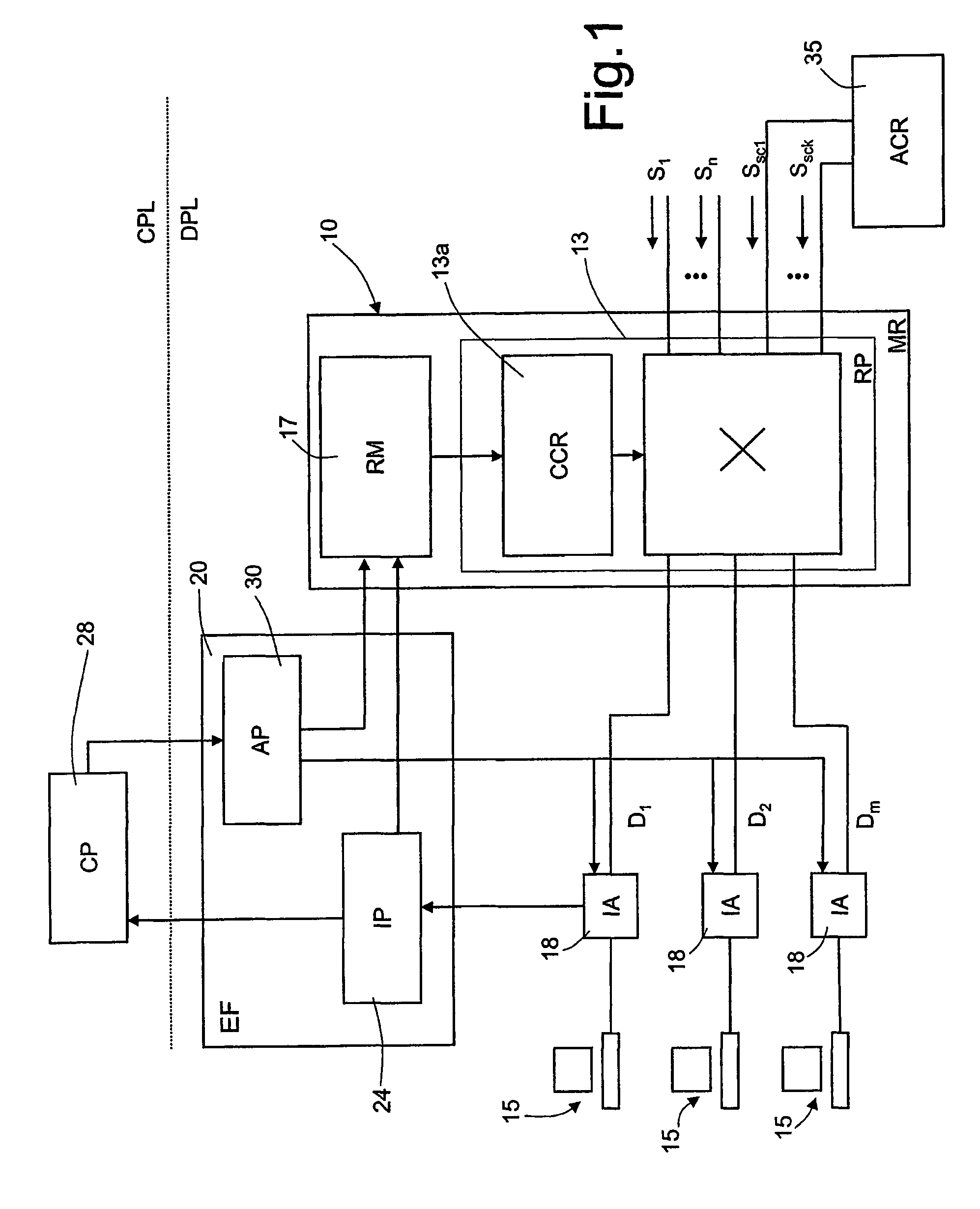The Applicant has observed that, up to now, the solutions proposed in the art are not completely satisfactory.
For example, in respect of the IGMP protocol the Applicant has noted the following:the IGMP protocol is not associated with any form of credentials and consequently it is not possible to create a pay service based on IGMP protocol: in the current embodiments, anyone who makes a request to become part of a certain
Multicast Group is simply added without verifying their identity and / or the relevant
authorization;the IGMP protocol does non provide for checking the availability of the resources necessary for distributing a given data packets and consequently it may happen that even if the distribution is set up for a given item of content on a certain interface, it does not reach the user in an integral form due to
unavailability of the necessary bandwidth; andthe IGMP protocol does not provide for the transmission of a positive /
negative response following a membership report from a host to a given group; this prevents, for example, sending information to the host regarding the causes of link failure with a given
Multicast Group (network problems,
authorization denied, insufficient credit, .
In respect of US 2003 / 0147392, the Applicant has noted the following:the approach proposed in the above application makes the fruition of a content dependent on the successful outcome of the
authentication and
authorization process, which inevitably introduces latency times that are unacceptable when it is wished to allow the user to scan rapidly all possible content (zapping);the proposed solution envisages for the introduction of a control entity on both the
client and the
router and therefore requires updating the
software on both of the parts involved, which can be difficult to manage in the case of the clients when a broad heterogeneous installed
software base already exists;the proposed solution envisages modifying a pre-existent protocol (IGMP) in order to allow the exchange of messages between the entities installed on the
client and those installed on the
router of the
service provider: this modification is required first of all for transmitting the credentials for
user authentication and the various status messages necessary to provide feedback to the user in cases when errors occur.
This approach is found to be limiting as it changes the purpose for which the protocol has been conceived; andthe proposed solution does not envisage checking the availability of resources between the Multicast
Router and the host that has sent the
multimedia content request, which guarantees the effective
usability of the transmitted
multimedia content via adequate
Quality of Service (QoS) parameters.
Further, in respect of US 2005 / 0080901 the Applicant has noted the following:the proposed solution makes distribution of the multicast flow dependent on the successful outcome of authorization process, and therefore is inevitably subject to latency times that are unacceptable when it is wished to allow the user to rapidly scan all possible content (zapping);the solution does not envisage checking the availability of resources between the Multicast
Router and the host that has sent the
multimedia content request, which guarantees the effective
usability of the transmitted multimedia content via adequate QoS parameters;the solution does not envisage user notification regarding the outcome of the membership report that was sent;the solution does allow prepaid services to be created with disconnection upon running out of credit and the transmission of an opportune warning to the end
client; andthe solution is restricted to the
network element on which the solution is embodied, which should be an
Ethernet switch.
The proposed solution is therefore not applicable to other network contexts where the clients are directly connected to a
router or the transport technology is not
Ethernet.
 Login to View More
Login to View More  Login to View More
Login to View More 


